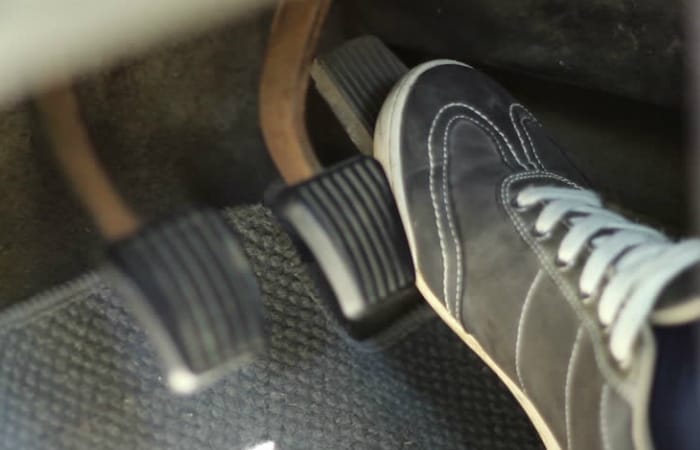Imagine if your brake fails to stop your vehicle in the middle of a busy street. How scary is that? That is why we really need to include the brakes during regular maintenance and replace them immediately if necessary. To ensure safety, how often should you change your brakes?
What Are the Factors Leading to Worn-Out Brakes?
Before we get to the specifics of changing your brakes, you need to have an idea first about factors that can disregard the average lifespan of these components. These factors can speed up the aging process of brakes:
Poor Material
Brakes that are made of carbon and ceramic are more durable than typical metal ones. However, they are very expensive and rare. They are usually found in luxury sports cars. Don’t worry because as long as your metal brakes are made of high-quality steel or other materials, you will be able to stop your car whenever necessary.
Extreme Heat
Intense heat can melt brake pads. This leads to a deformed structure wherein the pad sticks to the brake rotor. When this happens, you would find it hard to stop your car especially if you drive too fast.

Speaking of brake pads, they can be categorized according to their hardness. Soft compound pads are best for low-speed driving. They are perfect for people who only drive around the city. Meanwhile, hard compound pads are more durable but they need to be warm first just to function well. They are also kind of rare, mostly available in performance cars only.
Travel Conditions
If you are always driving in urban areas, you are most likely to keep stepping on your brakes to comply with traffic regulations. Traffic lights are found in almost every corner, requiring you to stop every time the red light illuminates. This condition will take a toll on your brakes.

Another harsh situation for your brakes is when you always drive downhill. You have to ride your brakes whenever your car goes down a slope to control the speed. If you choose not to use your brakes while going downhill, you might collide with another vehicle because of your high-speed movement. San Francisco is a perfect example of a residential area that has a lot of steep streets, requiring you to go downhill most of the time.
Driving Habits
As much as possible, do not step on your brakes with brute force. The recommended technique is to slowly step on the brake until your car stops. This requires the strong presence of mind for you have to perfectly estimate the distance from point A to point B in order to avoid hitting something when you finally stop.

Some drivers, especially beginners, tend to step on their brakes only if they are a couple of feet away from the object in front of them. They would unconsciously step on the brake harder than necessary. Even though this is essential for emergency cases, especially when a car suddenly appears in front you, the pressure will really deteriorate your brake pads.
How Often Should You Change Your Brakes?
If you are more likely to avoid the aforementioned scenarios that may lead to worn-out brakes, you are very lucky. What you need is maintenance instead. Again, how often should you change your brakes?
The standard is every after 50,000 miles. Meanwhile, the range starts from 20,000 miles up to 100,000 miles – largely depending on the vehicle’s model.
What Are the Symptoms of Malfunctioning Brakes?
We already explained earlier that several factors can speed up the deterioration of brakes. Aside from remembering the standard mileage intervals, you should also take note of the following symptoms that will give you a hint of urgent replacement:
Shaky Brake
A brake should be sturdy so that the vehicle will stop immediately whenever necessary. If it is shaky, you would find it hard to control your automobile. One of the reasons why brakes may become unstable is warped rotors. The best way to solve this problem is by replacing the deformed component. However, some experts can effectively grind the rotor’s surface to make it flat one more time.
Delayed Brake
We can accept that other things will always have a delay, but let’s never have this kind of tolerance when it comes to brakes. Accidents usually happen in just a matter of seconds. It is very possible to have an accident just because your brake’s mechanism is delayed for just one second.
Annoying Sounds
This is one of the most obvious symptoms for you can immediately hear the problem and work on it. If a brake squeals or makes a thumping sound whenever you step on it, check if a rotor suffers from corrosion. Other sounds include scraping which means a rock might have entered your braking system, and squeaking or grinding which tells you that your brake pads are acting up.
Brake Light
Another obvious sign of a malfunction is when the brake light suddenly illuminates on the dashboard. The exact same idea goes for the Check Engine light when there is something wrong with the engine.
Wear Patterns
Worn-out brake pads and rotors are easy to identify for they have noticeable signs of wear. Wear patterns even affect the thickness of brake pads. Nobody wants a flimsy brake pad because that is a safety hazard.
To check your rotors and brake pads, find them between the wheels’ spokes. Look first for a shiny metal disc, which is technically the rotor. Does it have severe pits or grooves? If yes, you have to replace it. Then, focus on its edges until you spot the caliper. The pad is between the rotor and caliper. Its thickness should be at least a quarter of an inch. If you will have a hard time looking through the spokes, you really have to take off the tire.
Summary
For the last time, how often should you change your brakes? The range starts from 25,000 miles to 70,000 miles. Meanwhile, the standard is every after 50,000 miles. However, do not forget about the symptoms of malfunctioning brakes. Remember, it is not always about mileage.
To know more about the lifespan of other automobile components, check out how long tires, strut assemblies and car batteries last!











